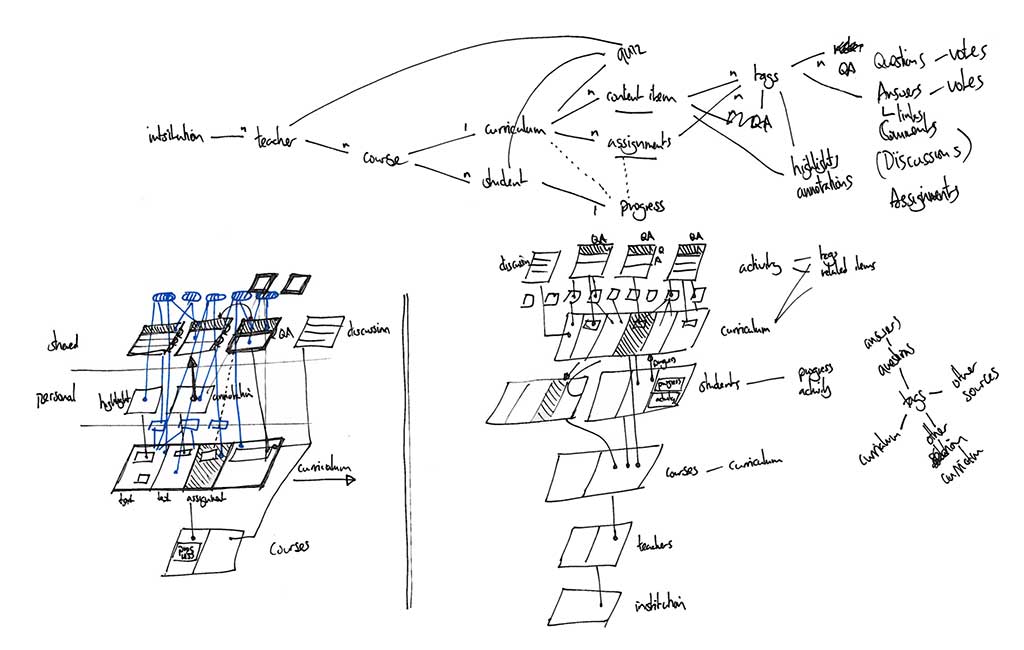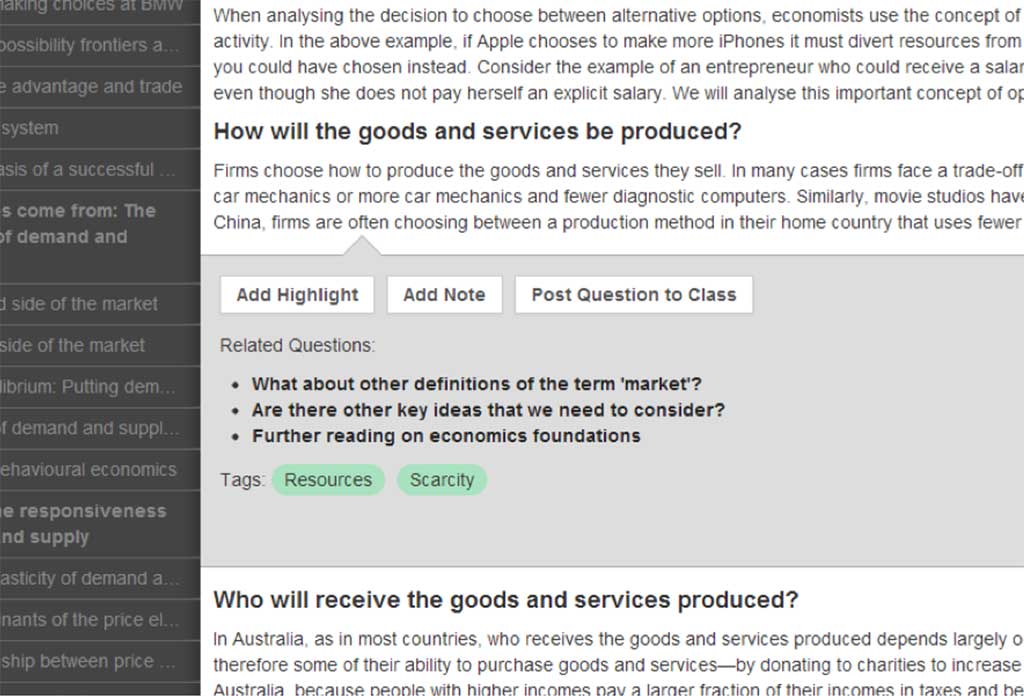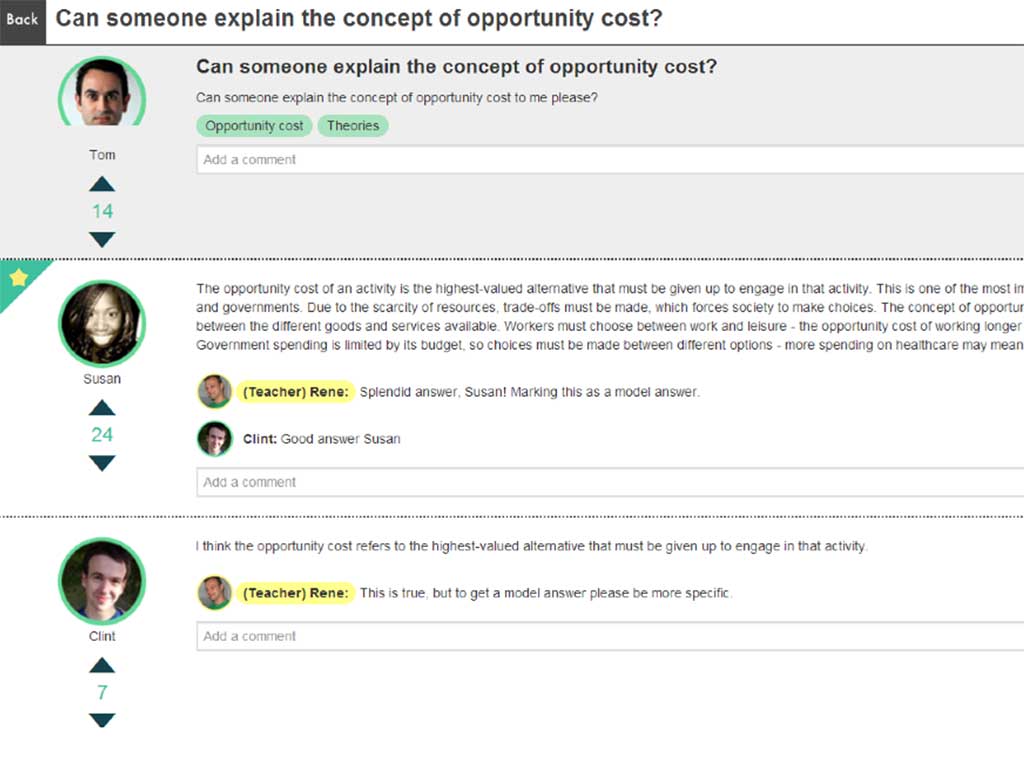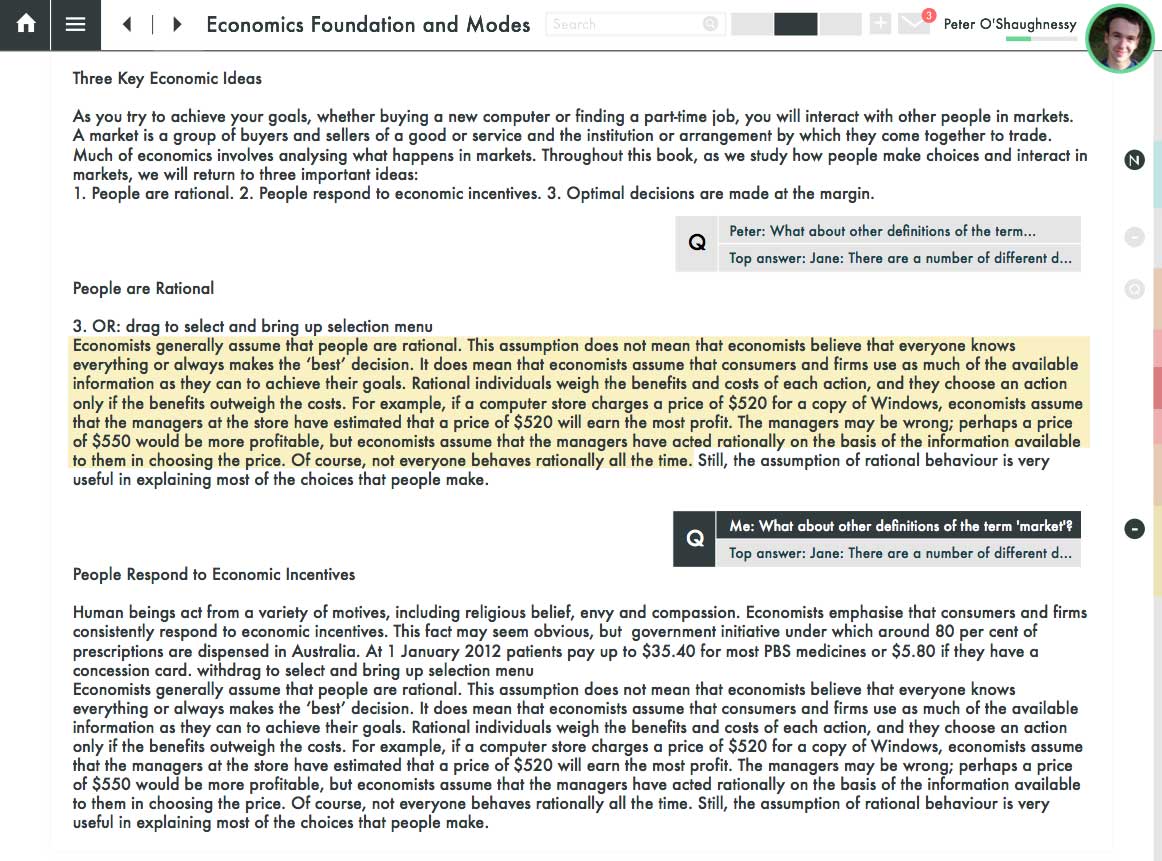Knowledge Base
Pearson Australia
Bringing students and teachers together within the learning content
The Challenge
How can social features help make learning more effective?
During one of our teams collaborative meet-ups, some of our colleagues at Pearson Australia came up with a great idea, that we explored and eventually built into a working prototype. Platforms such as Stack Overflow have become powerful tools for developers seeking answers to questions that they have, and as a way of demonstrating their expertise whilst also helping others. We wanted to see whether this could be incorporated into online learning platforms.
Design Highlights
- After initial analysis of services like Stack Overflow, we built up some hypotheses on what made the service so effective and successful. The service worked both as a repository of answered questions, and also a platform for users to build up their status and credibility.
- Speaking with our stakeholder developing the next learning platform for Pearson gave us confidence that this feature would be valuable, as well as informally questioning some students. We also got an indication how this could integrate into the current Pearson product roadmap.
- We decided on a web-based solution, that could be responsive to desktop and tablets in order to get the greatest reach.
- Students can ask questions to their classmates and teachers right at the point in the text where their question arises, and and can also see previous questions and answers in the same place, revealing another layer of understanding over the core textbook.
- We borrowed heavily from the Stack Overflow question and answer process, since that is well proven. Instead, our key differentiation came from it's deep embedding into the context of each question, and the enhanced discoverability that brings.
- Teachers can also monitor each students level of participation, by seeing how many questions they are asking, and seeing how their answers are rated by their peers. Visualisations of participation and ratings for student in the class help to give the teacher clear indications of their performance.
Outcome
Deep integration into the course content was a key feature that informed the roadmap of future products
Our prototype was well received by our stakeholders, and our key learnings were integrated into their project roadmap. They also helped to validate the concept by testing it as part of their UX testing programme.
Working sketches:




Hi-fidelity mockups:



